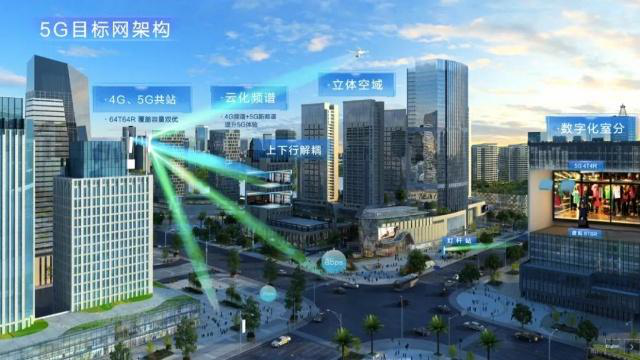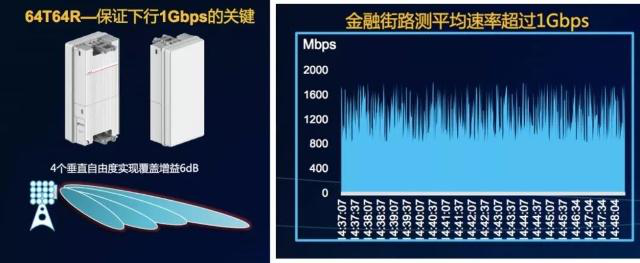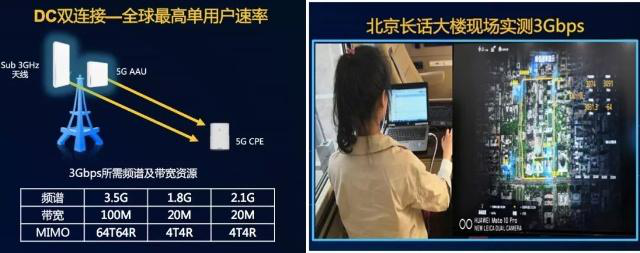NewsNews information
Mysterious 5G base station(3)
What does the 5G network architecture look like?
The following picture clearly depicts the 5G wireless network architecture:

5G wireless network combines multiple technologies such as 4 / 5G co-macro station, 3D MIMO, cloud spectrum, uplink and downlink decoupling, DC dual connection, pole station, micro station, indoor digitalization, etc. , To meet the growing network capacity and business needs.
3D MIMO antenna technology
64T64R 3D MIMO has the advantages of wide coverage, large capacity, and strong anti-interference ability. It is suitable for covering high traffic scenarios; at the same time, it has vertical dimension freedom and can also meet future 50m ~ 300m low-altitude digital coverage. The road test of Beijing Unicom's 5G test station shows that under the 100M bandwidth of the 3.5GHz band, 64T64R can ensure that the average rate exceeds 1Gbps.

Decoupling upstream and downstream
As we all know, the higher the frequency of the wireless signal, the greater the propagation loss and the smaller the coverage distance. 5G base stations use 3.5G intermediate frequency, which is higher than the 2/3 / 4G frequency band. Although the downlink coverage can still meet the same coverage as 4G due to the high power and multiple transmission and reception of AAU equipment, the uplink coverage is affected by the ability of the mobile phone to transmit Restrictions become shortcomings in 5G coverage.
In order to overcome the shortcomings of uplink coverage, 5G introduces uplink and downlink decoupling technology, that is, uplink services are switched to the 1.8G existing network base station at the edge of the 3.5G cell, thereby extending the effective coverage of 5G and realizing the common coverage of 4G and 5G co-site, which greatly save investment.
DC dual connection
DC dual connection refers to the 5G terminal is connected through 4G and 5G network, on Beijing Unicom 5G test station, by superimposing a 2.1G 4T4R radio frequency module in the uplink and downlink decoupling cell, using LTE2.1G 20M 4T4R, 1.8G 4T4R It is aggregated with 3.5G 100M 64T64R to achieve single user download rate up to 3Gbps.

Digitization room
Traditional room division is difficult to meet the needs of the 5G era, and digitalization of indoor coverage is an inevitable trend. Huawei ’s 5G LampSite indoor coverage digital solution supports Sub3GHz + C-Band multi-frequency integration, 5G NR + LTE multi-mode integration, network cable + fiber multi-transmission integration, and eMBB + IoT + navigation multi-service integration, which can achieve "Move" and "Do not increase" smoothly support 5G capacity expansion and evolution, protecting investment.
Overall layout: NEXT
5G NEXT specifically includes four aspects:
New Network:
As the next generation mobile communication network, 5G network has the advantages of large bandwidth, low latency, and multiple connections, and the network coverage is more advanced.
Experience:
The leading network experience creates seamless links for users, new network services for smart life and immersive network perception.
X:
Unlimited possibilities for 5G applications in the future. 5G slicing technology can provide a wealth of customized network capabilities for various applications, slicing as a service, enabling thousands of industries.
Technology:
Technology is the driving force for changing the world and driving the future. It is also the source of making life easier, making work easier, and making enterprises more efficient.
5G has set sail. If we say that from standard setting to freezing is October, now that 5G has crashed to the ground, we have clearly seen how it looks, heard its voice, and are planning to step into the next decade of mobile communications.